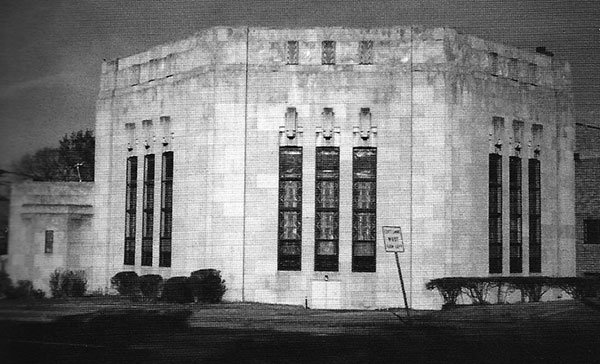Temple Emanuel

Temple Emanuel was established as a conservative congregation to consecrate a place where the Jews of Paterson and vicinity might worship in a manner adaptable to the American way of life and yet adhere to the customs of traditional Judaism.
In 1904, the First Austrian-Hungarian Benevolent Association, dedicated to mutual helpfulness in times of distress or sorrow, decided to establish a synagogue. Because they did not have a building of their own, they held services in various places: first in an old church on Hamilton Street, then in a Bridge Street bakery, and later in the Masonic Temple on Broadway. In April 1907, they bought land on Van Houten Street near Church Street, and the new building of Congregation Emanuel was dedicated and officially opened on August 25, 1907.
Because of the ever-expanding community and Temple membership, the president of the Temple, Jacob Fabian, a vaudeville and movie theater owner, contributed $400,000 in 1928 toward the building of a new Temple on Broadway and East 33rd Street and oversaw its construction. He hired Fred Wesley Wentworth, the famous Paterson architecht, to design a magnificent synagogue to resemble his impressive movie palaces. Temple Emanuel is an exuberant limestone and brick building that features a wealth of Art Deco design elements, including a massive octagonal sanctuary with bronze filigree entrance doors and twenty-one stained glass panels framed with bold geometric motifs that depict Biblical scenes. Wood pews radiate from the dais, which fronts a marble ark.
Jacob Fabian later increased his donation to include enough money to build a new Hebrew School, the Abraham M. Fabian Hebrew School, in memory of his son, who died at a young age. In 1928 a house on Park Avenue was purchased for the Hebrew School.
Temple Emanuel symbolized the rising affluence of Paterson’s Jewish community in the 1920s, when the prosperity of silk and other industries in Paterson enabled many Jews to move from downtown, where they had settled and built the congregation’s first home, to fashionable neighborhoods, such as Eastside Park where Emanuel is located.
Temple Emanuel thrived for roughly 40 years. But by the 1970s, Paterson’s industrial base was in decline, and its Jewish community was moving, with the rest of the white middle class, to the suburbs. The Jewish population of Paterson, which numbered 30,000 in the 1940s, included fewer than 1,000 members at the end of the millennium.
As more and more of Paterson's Jewish population moved out of Paterson to the suburbs, the congregation merged with another in the 1980s, and in 1995 opted to build a new house of worship in nearby Franklin Lakes.
An attempt was made to declare the Temple Emanuel sanctuary a historic monument so that the magnificent artistic decorations would be preserved. Howeer, after the synagogue's congregation left in 2005, a new owner had plans to reuse the building as a community arts center. The owner sought local designation for the building, but due to a political battle, the nomination did not pass. When the new owner bought the synagogue, a covenant with the sellers was signed, stating that the sellers had three years to exercise the option of removing the stained-glass windows. The sellers decided to exercise this option, and in 2008 the former congregation starting removing many important architectural features of the synagogue for use in their new place of worship in Franklin Lakes. After an intense legal battle, the new owners were forced to give up the significant windows. While the windows have been removed, the building still remains safe. The new owners are having new windows manufactured in China that replicate the originals as best as possible. They are pursuing tax credits with the intention of restoring the building and are looking for a new use for it. The owners are also pursuing local designation again, after the previously failed attempt.
Sources:
Jews of Paterson (2012), p. 29
Our Paterson Jewish Heritage (1987), p. 20
The Life & Times of Fred Wesley Wentworth (2012), pp. 88-92
Preservation NJ: 10 Most Endangered Historic Sites in New Jersey (Archive), "Temple Emanuel (updated 2010)," accessed at preservationnj.org on 6/14/2013.

